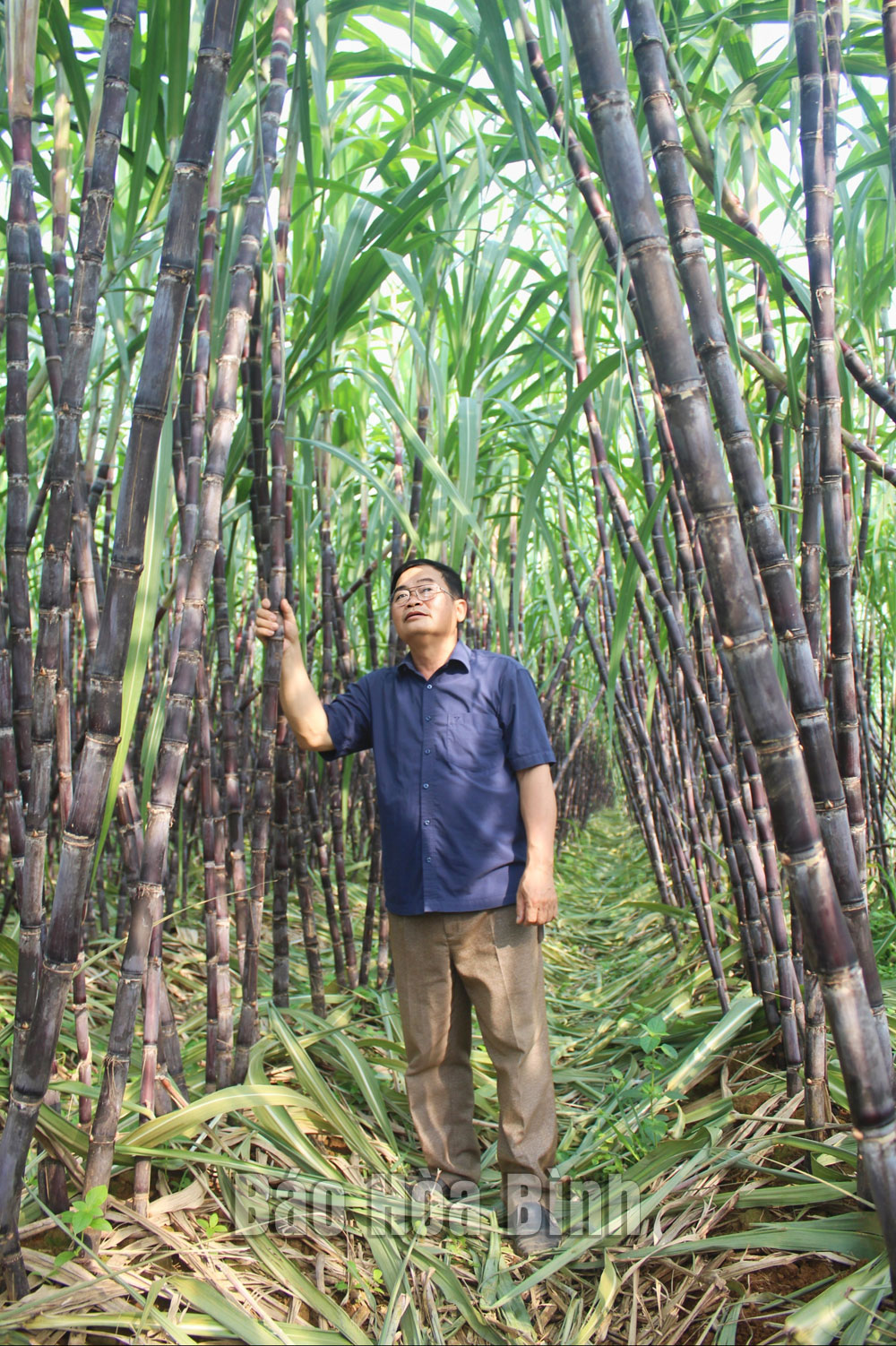
(HBO) – Merchants have placed orders for many sugarcane farms in My Hoa commune in Hoa Binh province's Tan Lac district, with prices ranging from 9,000-10,000 VND a tree, considered high as compared with that over the past years. This is a rosy signal for local sugarcane farmers.
Merchants have placed orders for many sugarcane farms in My Hoa
commune, Tan Lac district, with prices ranging from 9,000-10,000 VND a tree.
Previously, purple sugarcane farming had driven
economic development in My Hoa commune, with the total area amounting to
hundreds of hectares. However, the unstable consumption market has prompted
many households to shift to other crops.
Dinh Long Duong in Chu Bua hamlet is one of the
farmers who have maintained sugarcane cultivation for years. He established
Tung Duong agricultural cooperative in 2019 with 17 members, aiming to maintain
and develop sugarcane farming. With 21 hectares of sugarcane, the cooperative
has helped its members adopt new sugarcane farming methods.
After encountering a range of difficulties in
the two years of COVID-19, the cooperative’s members have begun to earn profits
as each sugarcane tree was sold at a price of 6,000 VND in the last crop.
Duong’s family alone has 5,000 sq.m of sugarcane
farming, which brought about more than 100 million USD in the crop.
Duong said thanks to new farming methods,
sugarcane quality has been improved, adding that deposits have been made for 10
hectares, with prices from 9,000-10,000 VND a tree.
Bui Hoang Long in Don hamlet is one of the first
cooperative member who have sold sugarcane this crop. Long earned nearly 200
million VND from over 1 hectares of sugarcane last year, equivalent to the
money he got after selling half of his sugarcane trees this year.
With the largest area of sugarcane, 1.8
hectares, Bui Van Nhat in Don hamlet expects to earn from 400-500 million VND
this year.
Duong said his cooperative aims to bring
sugarcane to supermarkets and even export the product in the future.
However, it is hard to produce sugarcane that
meets export standards, he said, adding that local farmers hope to receive more
support from agencies to maintain sources of varieties and adopt organic
sugarcane farming methods.
According to the provincial Department of
Agriculture and Rural Development, Hoa Binh has 7,150 hectares of sugarcane,
and the province has shipped 100 tonnes of sugarcane to the EU and the Republic
of Korea (RoK) so far./.
The Standing Board of the Hoa Binh provincial Party Committee has agreed in principle on a proposal by the Standing Board of the Party Committee of Hoa Binh city to gather feedback on the city’s 1:2000 zoning plan, which forms part of its broader urban development strategy.
Hoa Binh province has made notable progress in public administration reform and digital government development, with the satisfaction index among citizens and businesses reaching over 84%, according to recent government evaluations.
Thanks to great efforts by local authorities in recent times, the governance and public administration performance of Mai Chau district has been significantly improved.
In the afternoon of June 6, the Party Committee, the People's Council, the People's Committee and the Fatherland Front of Lac Son district solemnly held a meeting to celebrate the 139th anniversary of the district's founding (1886–2025) and the 79th anniversary of the establishment of the district's Party Committee (1946–2025). There was the attendance of Mr. Bui Van Thang, the Vice Chairman of the Provincial People's Council; Mr. Quach Tat Liem, the Vice Chairman of the Provincial People's Committee; Ms. Dang Bich Ngoc, the Deputy Head of the National Assembly Delegation of the province; as well as the former leaders of the province and district through various periods, who are the natives of the district.
Implementing the Politburo’s Resolution No. 57-NQ/TW on breakthroughs in science – technology, innovation, and digital transformation is a golden opportunity for the northern mountainous province of Hoa Binh to renew growth model, improve competitive edge and shorten digital gap.
Resolution 57-NQ/TW, issued by the Politburo on December 22, 2024, identifies sci-tech, innovation, and digital transformation as strategic breakthroughs to build a developed and prosperous nation. In Hoa Binh province, this spirit is not just a slogan, it’s being put into action through concrete initiatives that form a "new development triangle”: digital citizenship, digital economy, and digital administration.



